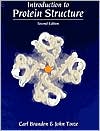Category Books
- Fiction Books & Literature
- Graphic Novels
- Horror
- Mystery & Crime
- Poetry
- Romance Books
- Science Fiction & Fantasy
- Thrillers
- Westerns
- Ages 0-2
- Ages 3-5
- Ages 6-8
- Ages 9-12
- Teens
- Children's Books
- African Americans
- Antiques & Collectibles
- Art, Architecture & Photography
- Bibles & Bible Studies
- Biography
- Business Books
- Christianity
- Computer Books & Technology Books
- Cookbooks, Food & Wine
- Crafts & Hobbies Books
- Education & Teaching
- Engineering
- Entertainment
- Foreign Languages
- Game Books
- Gay & Lesbian
- Health Books, Diet & Fitness Books
- History
- Home & Garden
- Humor Books
- Judaism & Judaica
- Law
- Medical Books
- New Age & Spirituality
- Nonfiction
- Parenting & Family
- Pets
- Philosophy
- Political Books & Current Events Books
- Psychology & Psychotherapy
- Reference
- Religion Books
- Science & Nature
- Self Improvement
- Sex & Relationships
- Social Sciences
- Sports & Adventure
- Study Guides & Test Prep
- Travel
- True Crime
- Weddings
- Women's Studies
Introduction to Protein Structure » (2nd Edition)

Authors: Carl Branden, John Tooze, John Tooze, John Tooze
ISBN-13: 9780815323051, ISBN-10: 0815323050
Format: Paperback
Publisher: Taylor & Francis, Inc.
Date Published: January 1999
Edition: 2nd Edition
Author Biography: Carl Branden
Carl Branden, was educated at Uppsala University (Ph.D.) and the MRC Laboratory for Molecular Biology, Cambridge, where he was a postdoctoral fellow in the laboratory of J.C. Kendrew. He has pursued a career in basic research, science administration (as science advisor to the Swedish Government), and biotechnology. Formerly Research Director of the European Synchrotron Radiation Facility in Grenoble, France, he is now at the Microbiology and Tumor Biology Center at the Karolinska Institute in Stockholm. A protein crystallographer with a distinguished academic career in research and teaching, he has made major contributions to the understanding of many biological structures, and is an editor of Structure.
John Tooze, was educated at Cambridge University (M.A.), London University (Ph.D.) and Harvard University (where he was a postdoctoral fellow in the laboratory of J.D. Watson). After several years in basic research, he moved principally into science administration and science publishing, notably as the executive secretary of the European Molecular Biology Organization, Heidelberg, Germany. He is currently Director of Support Services at the Imperial Cancer Research Fund Laboratories, London, and editor of EMBO Journal. A molecular biologist, his previous books include Molecular Biology of Tumor Viruses, The DNA Story (with J.D. Watson) and the very successful first edition of Recombinant DNA: A Short Course (with J.D. Watson and D.T. Kurtz).
Book Synopsis
Introduction to Protein Structure provides an account of the principles of protein structure, with examples of key proteins in their biological context generously illustrated in full-color to illuminate the structural principles described in the text. The first few chapters introduce the general principles of protein structure both for novices and for non-specialists needing a primer. Subsequent chapters use specific examples of proteins to show how they fulfill a wide variety of biological functions. The book ends with chapters on the experimental approach to determining and predicting protein structure, as well as engineering new proteins to modify their functions.
Candace J. Krepel
This text provides an excellent overview of protein structure and how structure and function interrelate. The previous edition was published in 1991. The purpose is to convey an understanding of protein structure as a basis for the understanding of biological reactions. The text is written at a content level consistent with advanced undergraduates or above. A basic knowledge of proteins and their biological function is assumed. Basic protein structure (primary, secondary, etc.) is reviewed, followed by elucidation of the structures of examples from various protein families (that is, proteins with common functions), and to demonstrate how function follows form. The editors use excellent interrelated illustrations that allow the reader to understand the three-dimensional aspects of the structures. Amino acid sequence is listed, secondary structure of alpha helixes and beta sheets are shown, then three-dimensional models and drawings demonstrate the tertiary structure. The editors use these to show how the proteins intersect and interact with the biological environment. They do an excellent job of showing proteins as being an important part of the living organism. The text offers an up-to-date look at what is known about protein structure and the methodologies for determining structure. The editors use well-chosen paradigms as examples. In this rapidly growing field, this new edition is welcome.
Table of Contents
PART 1 BASIC STRUCTURAL PRINCIPLES 1. The Building Blocks 2. Motifs of Protein Structure 3. Alpha-Domain Structures 4. Alpha/Beta Structures 5. Beta Structures 6. Folding and Flexibility 7. DNA Structures PART 2 STRUCTURE, FUNCTION AND ENGINEERING 8. DNA Recognition in Procaryotes by Helix-Turn-Helix Motifs 9. DNA Recognition by Eukaryotic Transcription Factors 10. Specific Transcription Factors Belong to a Few Families 11. An Example of Enzyme Catalysis: Serine Proteinases 12. Membrane Proteins 13. Signal Transduction 14. Fibrous Proteins 15. Recognition of Foreign Molecules by the Immune System 16. The Structure of Spherical Viruses 17. Prediction, Engineering, and Design of Protein Structures 18. Determination of Protein Structures
Subjects
 Medicine
Medicine  Biochemistry
BiochemistryScience & Nature
 Chemistry
Chemistry  Analytical Chemistry - General & Miscellaneous
Analytical Chemistry - General & MiscellaneousScience & Nature
 Earth Sciences
Earth Sciences  Crystallography
CrystallographyScience & Nature
 All Science & Nature
All Science & Nature  Chemistry - Biochemistry
Chemistry - BiochemistryScience & Nature
 All Science & Nature
All Science & Nature  Chemistry - General and miscellaneous
Chemistry - General and miscellaneousScience & Nature
 All Science & Nature
All Science & Nature  Earth Science
Earth ScienceNonfiction
 Medicine
Medicine  Medicine
MedicineNonfiction
 Science & Nature
Science & Nature  Chemistry
ChemistryNonfiction
 Science & Nature
Science & Nature  Earth Sciences
Earth SciencesNonfiction
 Science & Nature
Science & Nature  All Science & Nature
All Science & Nature
